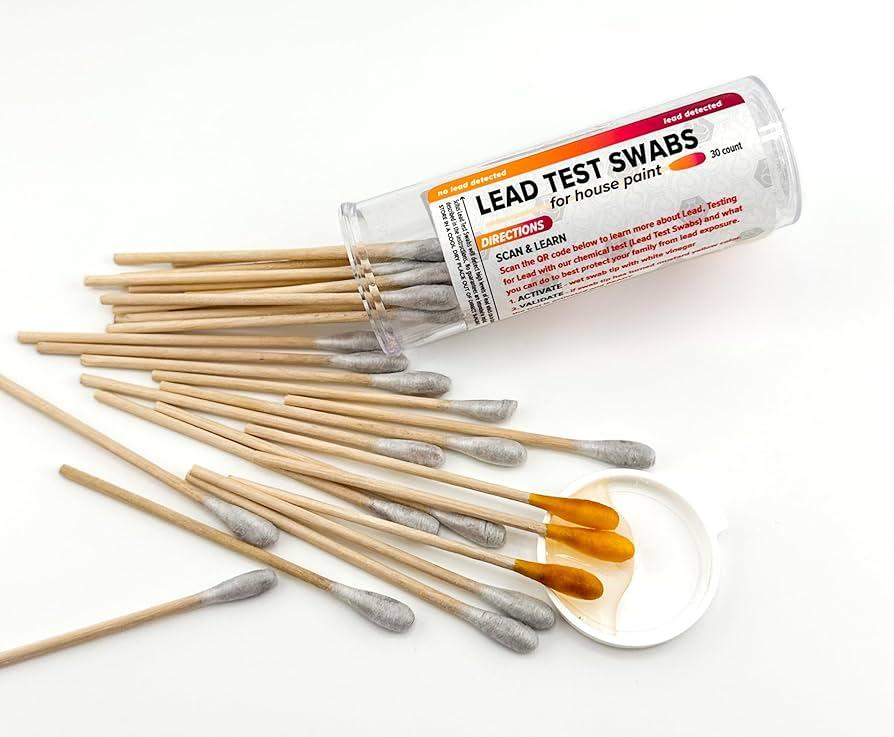In homes across the country, the silent threat of lead contamination continues to raise alarms, prompting households to seek reliable ways to ensure their water is safe. Enter the latest wave of at-home lead testing kits promising quick, accessible, and accurate results without the need for costly lab visits. But how well do these new technologies hold up under scrutiny? In this Denver7 Investigates feature, we put these innovative tools to the test, exploring their effectiveness, ease of use, and potential to empower Denver residents in the ongoing battle against lead exposure.
Understanding the Science Behind At-Home Lead Testing Kits
At-home lead testing kits harness a mix of chemistry and sensor technology designed for easy use without professional help. Most kits rely on a colorimetric reaction, where the presence of lead triggers a distinct color change on a test strip or swab. The underlying science involves chelation – special chemicals in the kit bind to lead ions, causing this visible shift. These reactions are sensitive enough to detect lead concentrations as low as parts per billion, making them effective for initial screening in tap water, paint chips, or dust samples.
Understanding the components involved clarifies the promise and limits of these kits. Aside from reagents, some newer models incorporate electrochemical sensors, providing quicker and potentially more precise readings by measuring electrical changes caused by lead particles. Below is a simplified comparison of common at-home lead test technologies:
| Technology | Detection Method | Pros | Cons |
|---|---|---|---|
| Colorimetric | Chemical reaction/color change | Easy to use, affordable | Subjective color reading, slower |
| Electrochemical | Electrical signal variation | Faster, more accurate | More complex, pricier |
| Fluorescence | Light emission under UV | Highly sensitive | Requires special lighting |
- Sample type: Different kits target water, paint, or dust, affecting accuracy.
- Environmental factors: Temperature and light can influence test results.
- Interpretation: Clear instructions are crucial as false positives or negatives can occur.
Evaluating Accuracy and User Experience in Real-World Settings
Putting these at-home lead testing kits through their paces in everyday environments revealed a mix of strengths and shortcomings. Many users praised the ease of use – the clear instructions and straightforward sampling process made testing approachable even for those without scientific backgrounds. However, accuracy varied widely depending on factors such as sample collection technique, water source, and timing of the test. While some kits delivered results that closely matched lab analyses, others showed discrepancies that raised questions about reliability in high-stakes scenarios.
Our hands-on evaluation highlighted several critical considerations for consumers:
- Consistency: Repeat tests often produced different results, suggesting sensitivity to slight variations in procedure.
- Readability: Color changes and indicator lines were sometimes subtle, leading to potential misinterpretation.
- Turnaround Time: Most kits provided results within 30 minutes, but faster feedback would increase user satisfaction.
| Feature | Average User Rating | Lab Comparison Accuracy |
|---|---|---|
| Ease of Use | 4.3/5 | N/A |
| Result Clarity | 3.8/5 | 85% |
| Accuracy Against Lab Standard | N/A | 78% |
| Time to Results | 4.0/5 | N/A |
Guidelines for Choosing and Using Lead Testing Technology Safely
When selecting at-home lead testing kits, it’s crucial to prioritize accuracy and safety. Opt for EPA-certified or third-party validated products to ensure reliable results. Pay close attention to the type of sample the kit requires, whether it’s water, paint, or dust, as improper sampling can yield misleading outcomes. Always read and follow the manufacturer’s instructions meticulously – skipping steps or misinterpreting directions can compromise both test integrity and your safety.
Equally important is how you handle and dispose of the materials after testing. Because lead is a toxic metal, use gloves during the process, avoid eating or touching your face, and make sure to clean all surfaces afterwards with appropriate cleaning agents. To keep your household safe, consider these best practices:
- Wear protective gear: gloves and masks if dust or paint chips are involved.
- Isolate test areas: prevent cross-contamination by testing in a controlled environment.
- Dispose safely: seal used test components in plastic bags and follow local hazardous waste regulations.
- Document results: keep a record of the test date, location, and findings for future reference or professional follow-up.
| Test Kit Feature | Why It Matters |
|---|---|
| Certification | Ensures result reliability and laboratory validation |
| Sample Type | Determines where and how the test can be applied |
| Result Speed | Final Thoughts
As concerns about lead contamination continue to resonate across communities, innovative at-home testing technologies offer a promising tool for individuals seeking peace of mind. While these new kits bring convenience and accessibility to the forefront, it’s important to approach results with measured understanding and, when necessary, follow up with professional assessments. Denver7’s investigation sheds light on the potential-and the limitations-of putting the latest lead detection methods to the test, reminding us all that vigilance remains key in safeguarding our homes and health. |
